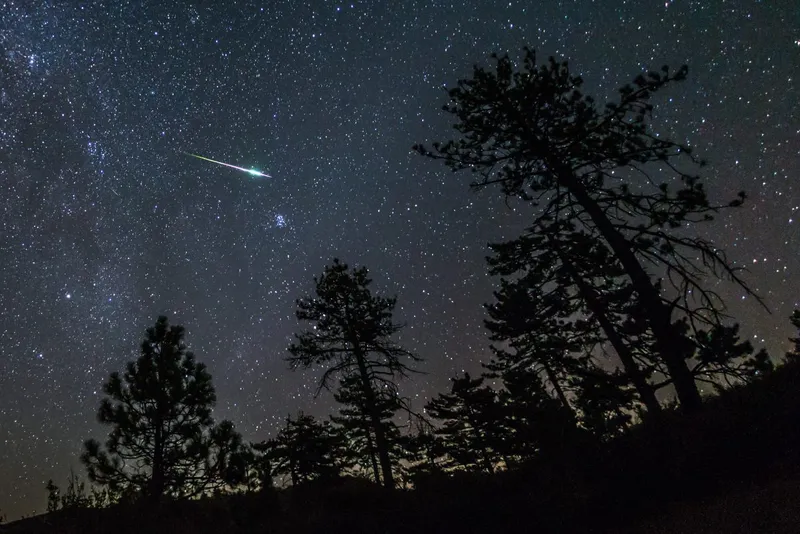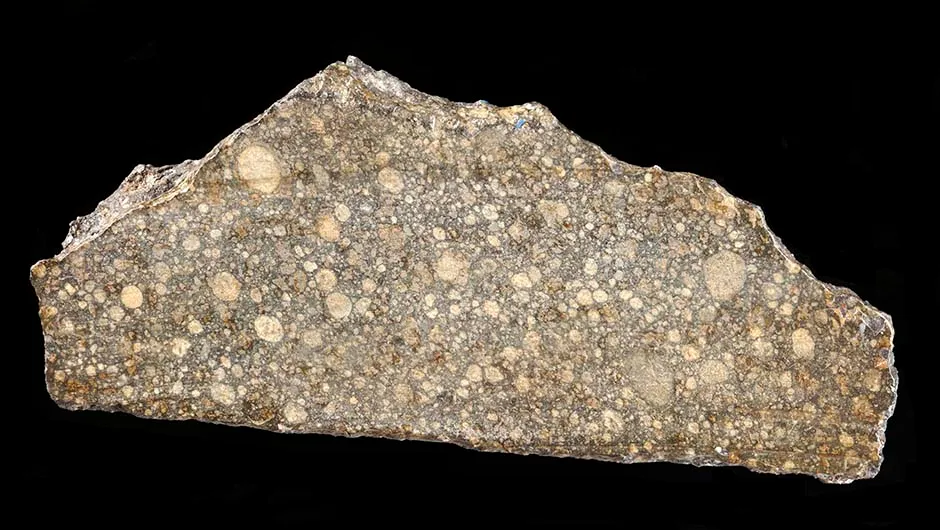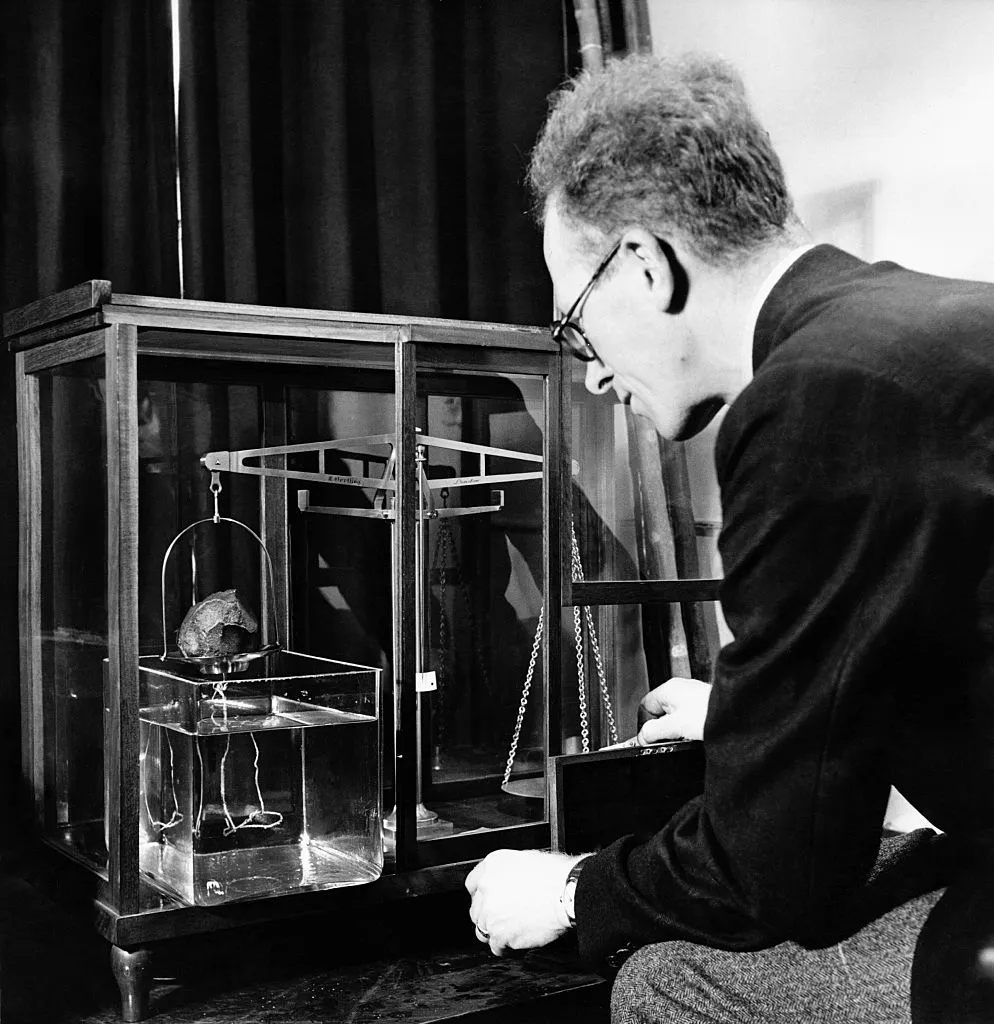Not many of us might expect to hear of a meteorite being found in small rural areas of the UK, but this is exactly what happened in Beddgelert, a small village in North Wales, when on 21 September 1949 a meteorite landed through the roof of the Prince Llewelyn Hotel.
When we think of meteorites falling to Earth, perhaps the most obvious geographical locations that spring to mind are places such as Africa, Central America and Antarctica.

Meteorites are small rock fragments from space that have entered and survived the passage through Earth's atmosphere, landing on the ground below.
These wonderful visitors are the result of collisions over millions of years during the birth of our planets and asteroids within the early Solar System.
As these rock fragments enter the atmosphere at high speed, they heat up due to pressure and friction.
The intense heat of the surrounding gases causes incandescence.
These bright, beautiful and often coloured rock fragments are called meteors and are what you see during annual meteor showers.

Should the meteor not completely burn up on entry, it falls and lands on Earth as a meteorite.
Meteorites can range widely in size; for example the 60-tonne meteorite that landed in Hoba in Namibia about 80,000 years ago to the Beddgelert meteorite, which was a much smaller at 794g.
Eyewitness accounts from Beddgelert residents at the time provide a fantastic picture of what the meteorite looked like as it plunged towards the village.
It was described as a beautiful blue flame with a bulbous body that lit up the sky, as well as people's bedrooms!
The spectacle lasted for a few seconds before the bright light dimmed and was followed by a loud bang.
It would materialise that this loud bang was in fact the rock falling through the roof of the hotel.
The hotel's landlady found the meteorite buried within the floor boards the morning next morning.
It was described as the size of a cricket ball and sooty black in colour.
Chondrite meteorites tell us about the early evolution of our Solar System and are undifferentiated material from which planetary bodies such as our own were formed.
Dr Jana Horak, Head of Mineralogy and Petrology, National Museum of Wales
The meteorite was recovered by two scientists from Durham University, who had read reports of the event in a local newspaper.
They hurried to Beddgelert to collect the sample and undertake analysis on the find as soon as possible.
Analysis showed that the meteorite was a chondrite.
"Chondrites are stone meteorites, generally from the outer part of the asteroid from whence they came," says Nick Howes, Director of Aerolite Meteorites in Europe.
"They get their name from the chondrules, which are small, colourful, grain-like spheres that occur in many (around 80 per cent or more) of all stone meteorites.
"Chondrites are the most abundant type of meteorite and it's one way meteorites can be identified, as chondrules are typically not found in any Earth rocks.'
When the meteorite was collected, it was divided into two pieces.
One piece was kept for Durham University and the other was sent to the Natural History Museum in London.
A small slice was given to the National Museum of Wales in Cardiff, where it is currently on display.

Dr Jana Horak, Head of Mineralogy and Petrology at the museum, explains how the piece came to the department and the analysis that has been undertaken.
"The small piece we have (16g) was donated to us jointly by the Natural History Museum and University of Durham. This was a joint donation, as K. F. Chackett, who dated the meteorites, was based at Durham.
"The meteorite has been used to determine its Cosmic Ray Exposure age and to classify the meteorite as an H5 chondrite.
"Chondrite meteorites tell us about the early evolution of our Solar System and are undifferentiated material from which planetary bodies such as our own were formed."
The meteorite is only one of 20 meteorite falls to be recorded in the UK and only one of two to be well-documented in Wales.

The other not-so-well-known meteorite fall was in Pontllyfni in Gwynedd in 1931, which was also miraculously found.
Much smaller than the Beddgelert meteorite at only 146g, it was cut in half and divided into samples that were used for analysing.
One half currently resides at the Natural History Museum in London.
So why are meteorite fall recordings so rare in the UK?
"We have, historically, compared to regions like North Africa and Australia's outback, a very wet and muddy landscape and our climate here on our little island can bury most meteorites quite quickly in vegetation and soil and also erode those meteorites with a high iron content into rust," says Nick Howes.
"Typically meteorites will be covered in a black fusion crust when freshly fallen, caused by their high speed entry in to the atmosphere and subsequent ablation (the loss of mass from the surface of the meteoroid by vaporisation).
"Deserts in Africa, Australia, through to the frozen desert-like conditions in Antarctica, enable objects not only to stand out, but can also survive in those dry conditions for millennia."
It is the 70th anniversary of the fall of the meteorite in 2019 and while this is an exciting moment in meteoritic history, it feels that it has somewhat been forgotten.
It was such a rare and unique find, I feel the occasion should be celebrated.
This is the intention of the National Museum Wales over the years to come.
Might you be lucky enough to one day watch a meteorite fall, pick it up and hold a piece of rock from outer space in your hand?
